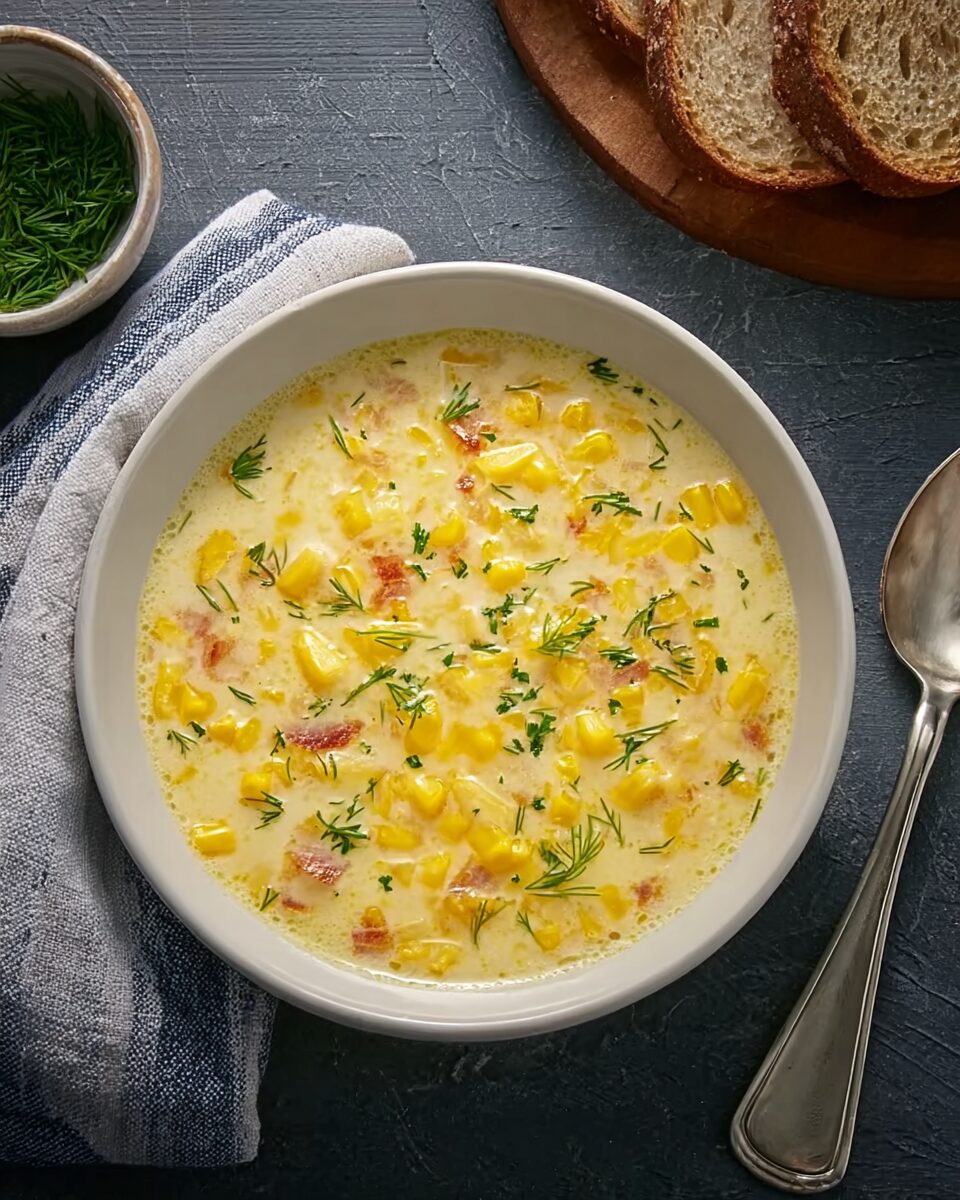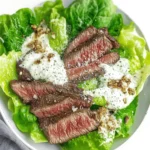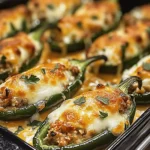Classic Corn Chowder is the epitome of comfort in a bowl, combining the sweetness of fresh corn with the creamy richness of broth and cream. It’s the ideal dish to warm up on a chilly day, and it has just the right balance of flavors to satisfy any craving.
This corn chowder can be customized with your favorite seasonings or garnishes, but the simple ingredients are enough to make it a crowd-pleaser. The tender potatoes and fresh corn give it a hearty, filling texture, while the creamy base adds richness and depth. Whether served as a starter or as a main dish, this chowder will quickly become a family favorite.
Full Recipe:
-
4 cups fresh corn kernels (or frozen)
-
1 medium onion, chopped
-
2 celery stalks, chopped
-
1 medium potato, peeled and diced
-
3 cups chicken broth
-
1 cup milk
-
1/2 cup heavy cream
-
2 tablespoons butter
-
1/2 teaspoon salt
-
1/4 teaspoon black pepper
-
1/4 teaspoon garlic powder
-
1/4 teaspoon thyme
-
2 tablespoons all-purpose flour
-
Fresh parsley, chopped (optional)
Directions:
-
In a large pot, melt butter over medium heat. Add the onion and celery, cooking until the vegetables are softened (about 5-7 minutes).
-
Add the potatoes, chicken broth, salt, pepper, garlic powder, and thyme to the pot. Bring to a boil, then reduce heat and simmer for 15 minutes, or until the potatoes are tender.
-
Stir in the corn kernels and continue to cook for another 5-7 minutes.
-
In a small bowl, whisk the flour with the milk until smooth, then slowly stir the mixture into the pot.
-
Add the heavy cream and simmer for an additional 5 minutes until the soup thickens.
-
Taste and adjust seasoning if necessary. Garnish with fresh parsley before serving.
Prep Time: 10 minutes | Cooking Time: 30 minutes | Total Time: 40 minutes
Kcal: 245 kcal | Servings: 6 servings
History and Origin
The origins of corn chowder are deeply rooted in American cuisine, particularly in the northeastern United States. Corn has long been a staple in North America, originally cultivated by indigenous peoples who taught early settlers how to grow the crop and use it in various ways. Corn chowder, like many other traditional dishes, likely evolved as a way to stretch simple ingredients into a filling, hearty meal.
Historically, chowders were rustic, made with whatever ingredients were readily available, such as corn, potatoes, and any leftover meats. Over time, the dish became more refined, with the addition of dairy products like milk and cream to create a smooth, velvety base. It became particularly popular in New England and along the U.S. East Coast, where it remains a beloved dish today. In fact, many coastal communities have their own take on chowder, with seafood variations, such as clam chowder, becoming just as iconic.
As with many traditional dishes, corn chowder has undergone numerous transformations over the years, with regional variations emerging to reflect local preferences. What started as a humble, rustic soup has grown to be a comforting, luxurious dish that graces tables across the world.
Variations and Adaptations
While the classic corn chowder recipe remains a favorite, many variations have popped up depending on regional preferences and dietary needs. In New England, for instance, the classic chowder often includes heavy cream or milk and sometimes a sprinkle of bacon bits for added flavor and texture. On the other hand, some recipes lean into the rustic nature of chowders, using simple vegetables and even broth-based alternatives for a lighter version.
There are many variations you can make to this corn chowder based on dietary restrictions or personal taste preferences. For a dairy-free version, you can substitute the heavy cream with coconut milk or another non-dairy alternative, while using vegetable broth in place of chicken broth. For those who enjoy a bit of spice, consider adding some diced jalapeños or a pinch of cayenne pepper to give the soup a little kick.
You can also play around with the inclusion of meats. A common addition in many corn chowder recipes is bacon, which adds a nice smoky depth to the flavor. For a heartier meal, some recipes feature sausage or even crab, which brings an interesting seafood twist to the dish. The addition of fresh herbs, such as thyme or parsley, can further elevate the flavor and add freshness to the rich and creamy base.
In some places, particularly in the Midwest, people will even throw in some beans to add texture and extra nutrients. A fun and modern twist on this dish can also be found by adding a sprinkle of cheese or using roasted corn for an extra burst of flavor.
Nutritional Information
Corn chowder, as comforting as it is, also packs a satisfying nutritional punch. While the exact calorie count will vary depending on the ingredients you choose, a typical serving of classic corn chowder provides a balanced combination of macros. On average, a single serving of this corn chowder contains approximately 245 kcal, which is relatively moderate for a creamy soup.
The primary source of calories in this dish comes from the potatoes, corn, and cream. Potatoes provide a good source of carbohydrates, giving the chowder a filling quality that makes it a perfect meal for lunch or dinner. Corn, being a whole grain, adds a nice touch of fiber and natural sweetness, which balances the savory elements of the dish. It’s also a rich source of B-vitamins, particularly thiamine, which plays a key role in metabolism.
The dairy products used in corn chowder—namely milk and heavy cream—bring in healthy fats and calcium, helping to support bone health. However, if you’re watching your fat intake, you can swap the cream for lower-fat alternatives or use plant-based milks, which will make the chowder lighter but still creamy.
In terms of micronutrients, this chowder offers a nice dose of vitamin C from the corn and potatoes, which helps bolster the immune system. The soup is also rich in potassium, a mineral important for heart health, due to the inclusion of potatoes.
Serving Suggestions and Pairings
Corn chowder is a versatile dish when it comes to serving options. It can easily stand alone as a meal, but pairing it with a side dish can elevate the overall dining experience.
For a classic pairing, consider serving your corn chowder with crusty bread or warm rolls. A thick slice of sourdough or a buttery baguette works perfectly for dipping into the creamy soup. For a lighter option, you could pair it with a crisp, green salad, featuring mixed greens and a simple vinaigrette to cut through the richness of the chowder.
If you’re looking for something a little more indulgent, a side of garlic bread or cheese-stuffed biscuits would make a delightful addition. The richness of the soup and the crunchiness of the bread create a satisfying contrast that’s both comforting and delicious.
In terms of drinks, a light white wine like Sauvignon Blanc or a dry Chardonnay complements the creamy texture of the soup without overwhelming the delicate flavors. For non-alcoholic options, consider serving iced tea or sparkling water with a wedge of lemon to refresh the palate between bites.
Tips and Tricks for Success
To ensure that your corn chowder turns out perfectly every time, here are a few expert tips:
-
Fresh Corn vs. Frozen Corn: If you’re able to get your hands on fresh corn, it can add an extra layer of sweetness to your chowder. However, frozen corn is a perfectly acceptable alternative and often more convenient.
-
Simmer, Don’t Boil: Once you add the cream and milk, make sure to simmer the chowder gently. Boiling it can cause the dairy to curdle, resulting in an undesirable texture.
-
Texture Adjustments: If you prefer a smoother chowder, consider using an immersion blender to blend a portion of the soup before adding the corn and cream. This will give the soup a creamier consistency while still maintaining a hearty texture.
-
Season to Taste: Corn is naturally sweet, so be mindful of how much salt you add. Start with a small amount and taste as you go to ensure the flavors balance out perfectly.
-
Thicken It Up: If you like a thicker chowder, you can always add a bit of flour or cornstarch to help the soup come together. For a gluten-free version, try using potato flour or rice flour.
Potential Health Benefits
Corn chowder can be more than just a delicious meal; it also offers some surprising health benefits. The corn in the soup is an excellent source of fiber, which aids in digestion and helps maintain a healthy gut. The addition of potatoes provides potassium, which is important for heart health and maintaining blood pressure levels.
Moreover, if you opt for a version made with non-dairy milk and plant-based ingredients, you can reduce the saturated fat content and increase the soup’s fiber and antioxidant levels. If you add leafy greens like spinach or kale, you’ll boost the dish’s vitamin K and folate content, both of which support bone health and help combat inflammation.
Conclusion
Classic corn chowder is one of those dishes that offers comfort, flavor, and versatility all in one bowl. Whether you prefer it simple or with your own twist, it’s a meal that can be enjoyed year-round. So why not try making this delicious soup for your next family meal or dinner gathering? It’s sure to become a staple in your kitchen, bringing warmth and joy to your table every time.





